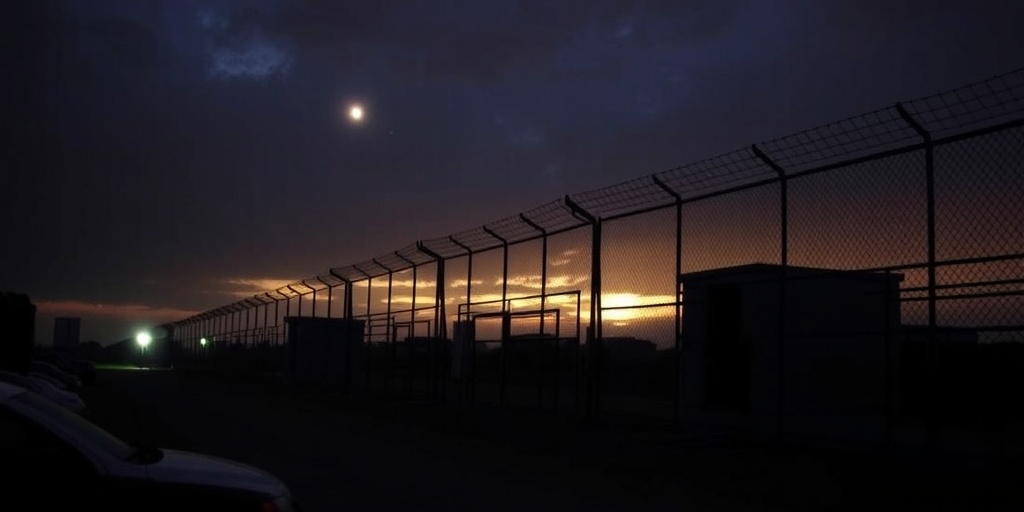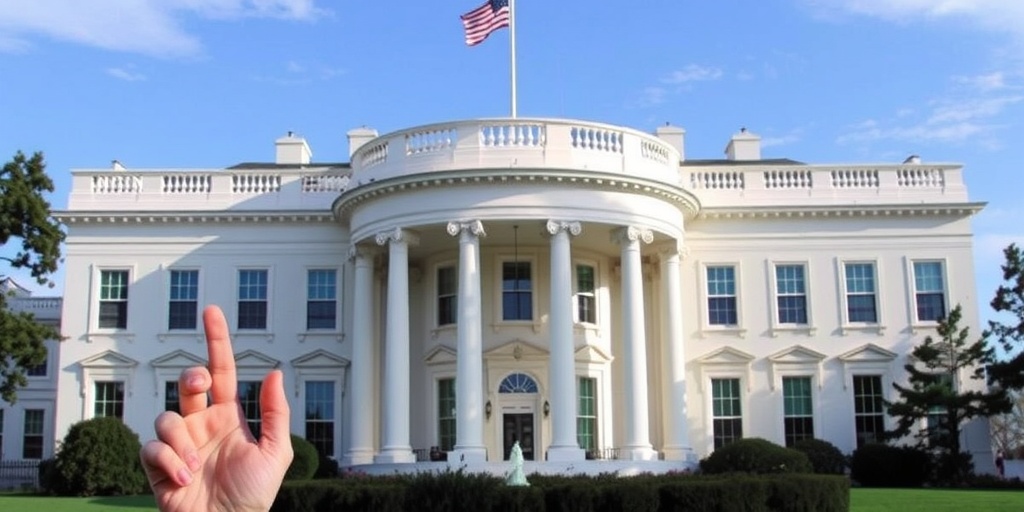Now Reading: Insights into Guantánamo Bay’s Secretive Migrant Mission
-
01
Insights into Guantánamo Bay’s Secretive Migrant Mission
Insights into Guantánamo Bay’s Secretive Migrant Mission

Title: Trump Administration Transfers Venezuelan Migrants to Guantanamo Bay Amid Controversy
In a surprising move, the Trump administration has transferred over 150 Venezuelan men from an immigration holding facility in Texas to the military base at Guantanamo Bay. These individuals have been issued final deportation orders, although the reasons behind this specific transfer remain unclear. Historically known for holding wartime detainees post-September 11 attacks, Guantanamo has also served as a temporary housing site for various migrant groups, including Haitians and Cubans. The base’s history creates an unsettling association with indefinite detention and legal ambiguities, raising questions about the treatment of these Venezuelans.
On January 29, President Trump directed the Defense and Homeland Security Departments to prepare Guantanamo for potential housing of up to 30,000 migrants. Recent satellite images indicate infrastructure development, with tents being erected near areas previously designated for migrant operations. Current military reports state that approximately 850 personnel, including over 700 service members, are assigned to manage the Venezuelans, who are being sheltered in two separate facilities: a 120-bed Migrant Operations Center and a 176-cell military prison.
Traditionally, the Migrant Operations Center is under the purview of the Department of Homeland Security (DHS), which has employed contractors to manage operations. However, the immigration enforcement division of DHS has committed only ten officers for this migrant mission, with plans to increase this number by deploying 50 contract security personnel. In order to effectively accommodate a larger migrant population, the administration will need to bolster staffing to handle the increased demands on the facility.
An area of concern remains the identities and backgrounds of the men being held at Guantanamo. While the Trump administration has indicated that many of them may be violent gang members, no concrete evidence has been presented to support these claims. The administration has withheld their names and specific details about the charges against them. Court records for some individuals indicate they entered the U.S. illegally, typically by crossing the Rio Grande, leading to their apprehension by border guards. In recent communications, officials have increasingly referred to these individuals as “illegal aliens.”
The future of these Venezuelan men lies in the hands of the Trump administration’s capacity to negotiate their repatriation with the Venezuelan government or an alternative country willing to accept them. U.S. officials portray Guantanamo as a temporary solution for those facing deportation, though complications arise if any detainees have asylum claims pending resolution.
Despite the arrival of some Venezuelans at Guantanamo, reports have emerged of others being returned to Venezuela. For instance, on February 10, Venezuelan authorities dispatched two planes to El Paso, Texas, retrieving approximately 190 citizens with deportation orders, while simultaneously, the U.S. military transported 15 men to Guantanamo.
Historically, Guantanamo Bay housed around 780 detainees linked to Al Qaeda and the Taliban between 2002 and 2008, though only 15 remain today, awaiting trial as military prisoners under the president’s war powers. The legality of using a military facility for civilian immigration matters presents significant challenges. The framework for military commissions is explicitly designated for war-related crimes, thereby restricting its application to terrorist detainees.
The Venezuelan migrants, apprehended domestically during peacetime, fall under the civil jurisdiction of the DHS and could contest their detention status through federal courts. This situation raises additional questions regarding their rights and the legal grounds for their confinement. While the law prohibits transferring these men to the mainland U.S. from Guantanamo, there is no limitation on transporting them back to the states for court appearances, if necessary.
Concerns about deploying U.S. troops for migrant management at such a notorious facility encompass implications of militarization of immigration processes and potential misallocation of military resources. Historically, the DHS has retained the authority and responsibility for managing migrants, relying heavily on personnel trained for specific civilian duties. The convergence of military capabilities in managing populations traditionally handled by civilian agencies raises both practical and ethical concerns.
Moreover, the costs associated with this operation could be substantial. Although basic supplies like tents were available at Guantanamo, the additional need for resources, such as drinking water, will necessitate costly airlifts. The extensive financial burden of maintaining operations at Guantanamo has been evident, costing an estimated $13 million annually per prisoner, as reported previously.
The optics of this operation may also serve as a political message. Images of migrants being shackled and transferred by military planes to Guantanamo could deter future attempts at illegal entry into the U.S. Furthermore, for Trump’s supporters, this initiative might signal a fulfillment of past campaign promises regarding the removal of individuals labeled as threats from society.
As legal challenges emerge surrounding the transfers and treatment of these migrants, the situation continues to unfold, highlighting the intersection of immigration policy, human rights, and national security in an increasingly complex environment.
Stay Informed With the Latest & Most Important News
Previous Post
Next Post
-
 01New technology breakthrough has everyone talking right now
01New technology breakthrough has everyone talking right now -
 02Unbelievable life hack everyone needs to try today
02Unbelievable life hack everyone needs to try today -
 03Fascinating discovery found buried deep beneath the ocean
03Fascinating discovery found buried deep beneath the ocean -
 04Man invents genius device that solves everyday problems
04Man invents genius device that solves everyday problems -
 05Shocking discovery that changes what we know forever
05Shocking discovery that changes what we know forever -
 06Internet goes wild over celebrity’s unexpected fashion choice
06Internet goes wild over celebrity’s unexpected fashion choice -
 07Rare animal sighting stuns scientists and wildlife lovers
07Rare animal sighting stuns scientists and wildlife lovers





















